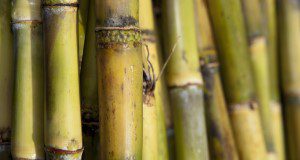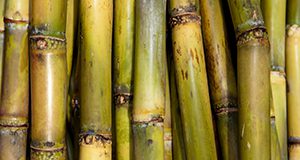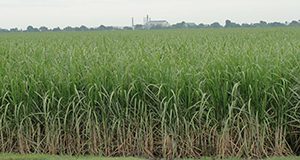Sugarcane growth on mineral soils in Florida can often be highly variable as related to the nature of the soils. The soil factor that best relates to sugarcane growth is soil organic matter content. Very stunted sugarcane is also associated with high nematode populations, which indicate high risk of crop damage. This new 4-page publication of the UF/IFAS Agronomy Department discusses grower options for evaluating and increasing soil organic matter. Written by J. Mabry McCray and Stewart Swanson.
https://edis.ifas.ufl.edu/ag441
Tag: Sugarcane
Elemental Sulfur Recommendations for Sugarcane on Florida Organic Soils
Micronutrient deficiencies can be important limiting factors in alkaline soils, with most micronutrients becoming less available for plant uptake as soil pH increases. This 6-page document is intended primarily for Florida sugarcane growers but may also be useful to researchers and others interested in sugarcane nutrition. It presents revised elemental sulfur recommendations for sugarcane grown on Florida organic soils along with supporting information. Written by J. Mabry McCray, and published by the UF/IFAS Agronomy Department, February 2019.
http://edis.ifas.ufl.edu/ag429
Potassium Fertilizer Recommendations for Sugarcane on Florida Organic Soils
Potassium is a primary plant nutrient that is required in large amounts by sugarcane. About 74% of the 400,000 acres of Florida sugarcane is grown on organic soils in the Everglades Agricultural Area. Potassium is not a component of organic matter and virgin Histosols contain very low concentrations of K, so release of K through mineralization of organic matter in these soils is not an adequate K source for plant growth. This 7-page document presents revised potassium fertilizer recommendations for sugarcane grown on Florida organic soils along with supporting information. Written by J. Mabry McCray, and published by the UF/IFAS Agronomy Department, February 2019.
http://edis.ifas.ufl.edu/ag428
Florida Crop/Pest Profile: Sugarcane
Sugarcane (Saccharum interspecific hybrids) is the main source of sugar in the world. It is grown in more than 90 countries in tropical and subtropical regions. Cultivation techniques and production challenges vary by location (Rott 2017; Rott 2018). This 19-page document discusses characteristics of the sugarcane crop and pests affecting its production in Florida, which is the largest producer of sugarcane in the United States. Written by P. Rott, D. C. Odero, J. M. Beuzelin, R. N. Raid, M. VanWeelden, S. Swanson, and M. Mossler, and published by the UF/IFAS Agronomy Department, revised May 2018.
http://edis.ifas.ufl.edu/pi207
SC087 Projected Costs and Returns for Sugarcane Production on Mineral Soils of South Florida, 2007-2008
SC087, a 16-page report by Fritz M. Roka, Jose Alvarez, and Leslie E. Baucum, develops a model enterprise budget that reflects annual costs and returns for a 5,000-acre farm that grows sugarcane on mineral soils. Includes references. Published by the UF Department of Agronomy, September 2009.
http://edis.ifas.ufl.edu/SC087
SSAGR253/SC052 Backyard Sugarcane
Revised! SS-AGR-253, a 5-page fact sheet by L. Baucum, R.W. Rice, and L. Muralles, informs homeowners of the types and varieties of sugarcane, site selection, planting material, planting, early care, formation of the stool, pest management, harvesting, and overwintering. Published by the UF Department of Agronomy, October 2009.
http://edis.ifas.ufl.edu/SC052
SL295/SS508 Review of Current Sugarcane Fertilizer Recommendations: A Report from the UF/IFAS Sugarcane Fertilizer Standards Task Force
SL-295, a 6-page report by K.T. Morgan, J.M. McCray, R.W. Rice, R.A. Gilbert and L.E. Baucum, reports the findings of a task force of Florida agronomists and soil scientists, agents and local grower representatives. It includes a review of the current fertilizer recommendations for sugarcane, a review of recent sugarcane fertilizer research, and an assessment of the gaps and recommended research priorities. Published by the UF Department of Soil and Water Science, July 2009.
http://edis.ifas.ufl.edu/SS508
SS-AGR-332/SC032 An Overview of Florida Sugarcane
Revised! SS-AGR-232, an 8-page illustrated fact sheet by L. E. Baucum and R. W. Rice, answers the most frequently asked questions about the commercial Florida sugarcane industry and describes the production of sugarcane and sugar. Published by the UF Department of Agronomy, August 2009.
http://edis.ifas.ufl.edu/SC032
FE754 Economic Impacts of the U.S. Sugar Corporation in Florida: Implications of the Purchase by the State of Florida
FE754, a 10-page illustrated report by Alan W. Hodges, W. David Mulkey, Thomas H. Spreen, and Rodney L. Clouser, evaluate the economic impacts of the current operations of USSC and the potential impact under the proposed purchase, based on publicly available
information from the company’s website (http://www.ussugar.com
) and other sources. Includes references. Published by the UF Department of Food and Resource Economics, October 2008.
http://edis.ifas.ufl.edu/FE754


